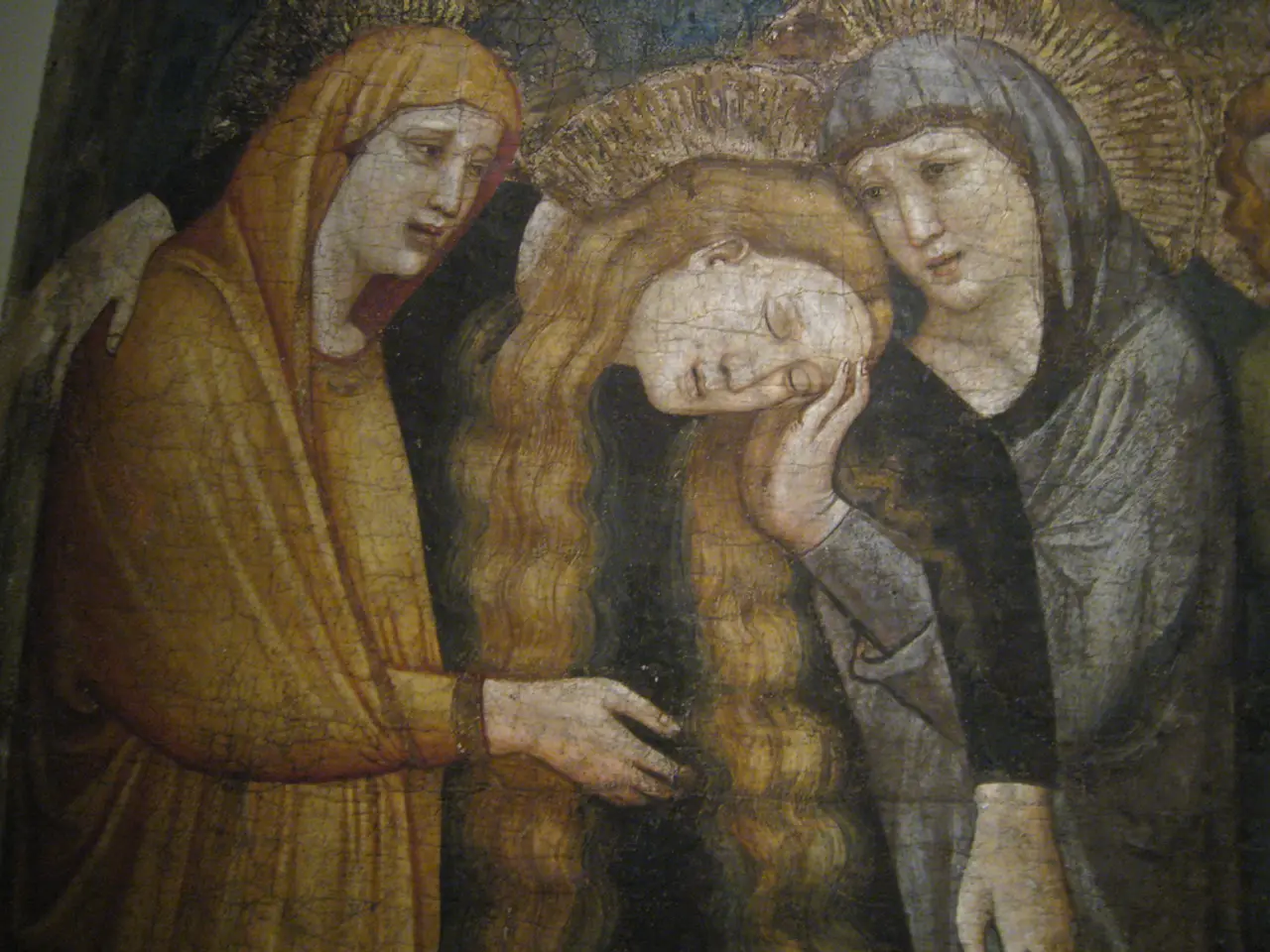Exploring the intimate portrayal of desire in Tom Wesselmann's masterpiece 'Up Close'
In the late 1960s and early 1970s, a cultural shift took place that marked a brief but notable moment in history. Known as the 'porno chic' moment, this era saw pornography and explicit sexual content enter mainstream American film and conversation with a new degree of openness and even a certain stylishness or cultural cachet.
This cultural shift occurred against the backdrop of the sexual revolution, a time of sexual liberation, countercultural movements, and challenges to traditional norms around sex, censorship, and morality. Films like Deep Throat (1972) and Behind the Green Door (1972) weren't just underground fare; they found audiences beyond the usual niche, were reviewed by mainstream critics, and discussed publicly—effectively blurring lines between "high" and "low" culture, art and pornography.
Tom Wesselmann, a leading figure in the Pop Art movement, produced a series of explicit works focusing on the male genitalia during this period. His penis paintings, provocative not only for their explicitness but also for their placement within the art gallery setting, intersected with the cultural moment of 'porno chic.'
Wesselmann's work, such as 'Bedroom Painting #19' (1969) and 'Bedroom Painting #30,' often features a solitary, burnt out cigarette in an ashtray, and a recurring background that resembles a film set. In 'Seascape #27' (1967-69), a penis extends beyond the edge of the background, leaving a lack of context as a space for desire.
The dissonance between the object and the location in Wesselmann's work leaves a lingering question: is this what you desire? His artworks weren't just pornographic; they participated in a broader exploration of human sexuality, desire, and identity—issues central to the era's cultural debates.
Wesselmann's work challenges the viewer to consider a penis as something divorced from the rest of the body and without context. This parallels the way 'porno chic' brought sex from the margins into the market-driven mainstream. His art, like the porno chic films, contributed to eroding the boundary between pornography and art.
The 'Up Close' exhibition, running until 12 April at Almine Rech, showcases Wesselmann's work and offers objects and fragments to understand what makes them desirable. The exhibition doesn't provide an answer to the question of desire, but it invites viewers to ponder and explore.
Wesselmann's pop art sensibility is seen in his use of simplified forms and vivid colors, making his work similar to the soup cans and comic strips of his contemporaries. His penis paintings exist in a space between figurative and abstract art, bridging the gap between mainstream pop art and the counterculture of 'porno chic.'
Other significant works from this period include Andy Warhol's film 'Blue Movie' (1969) and adult films like Deep Throat and The Devil In Miss Jones. Wesselmann's art, like these films, reflects and contributes to the broader questioning and reconfiguration of sexual norms and artistic boundaries that characterized the early 1970s.
You can learn more about the 'Up Close' exhibition and Wesselmann's work on the Almine Rech website: alminerech.com.
- Tom Wesselmann's explicit works, particularly his penis paintings, demonstrate a merging of pop culture and the controversial topic of sexuality, reflecting the 'porno chic' moment in history.
- The 'Up Close' exhibition, featuring Wesselmann's artworks, invites viewers to explore the realms of human desire through the lens of pop culture and the cultural debates of the late 1960s and early 1970s.






